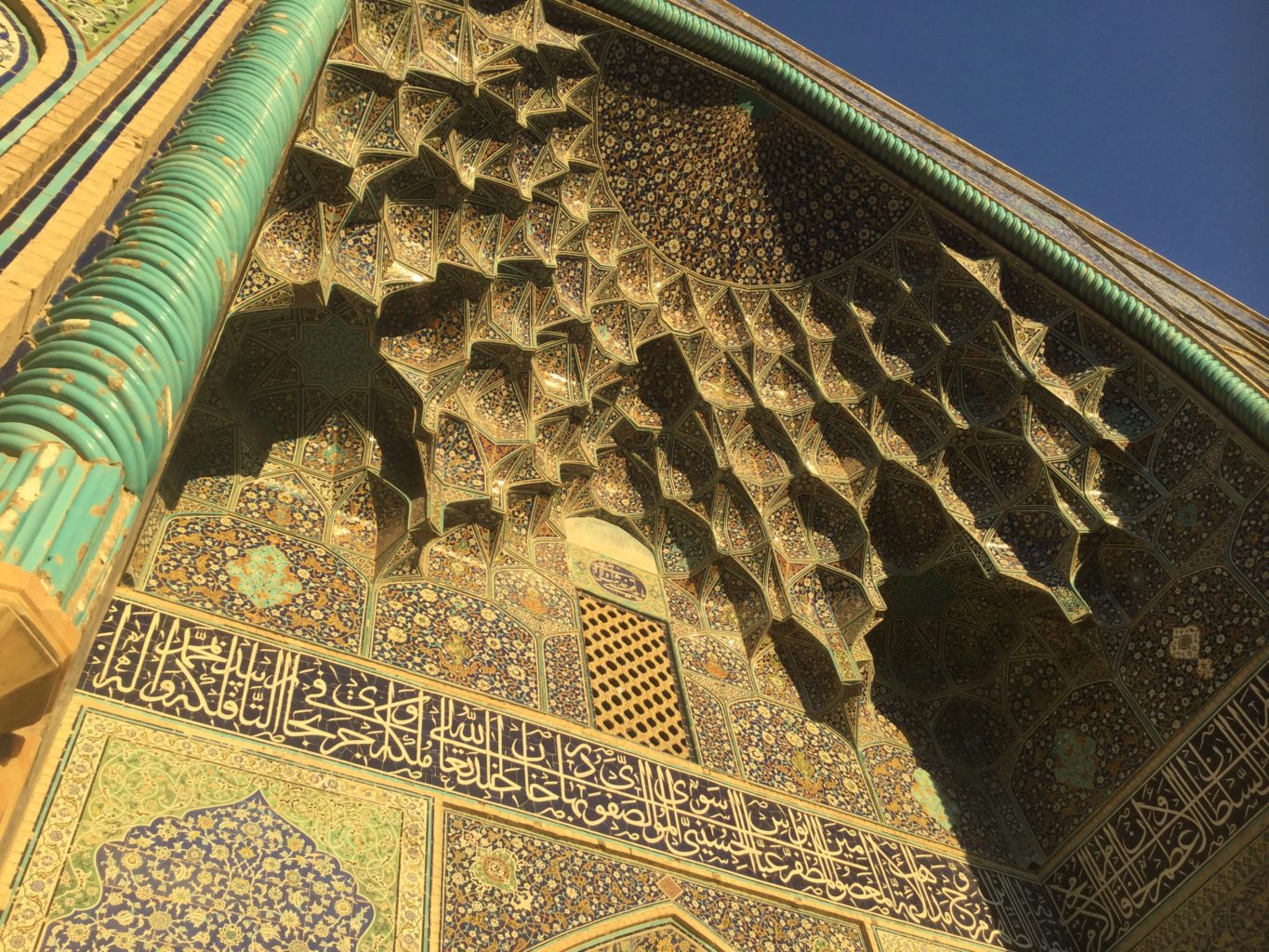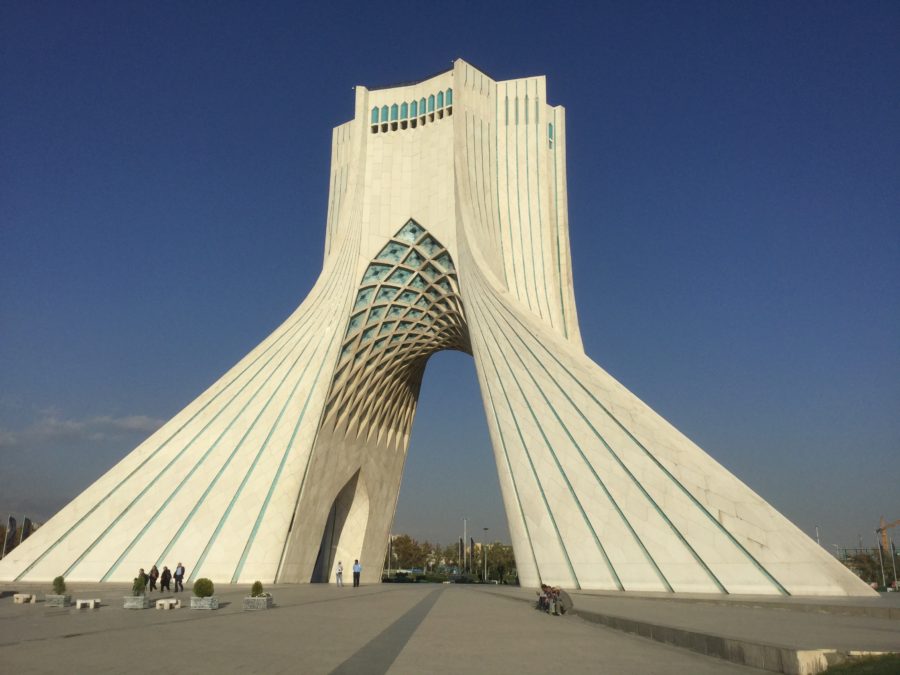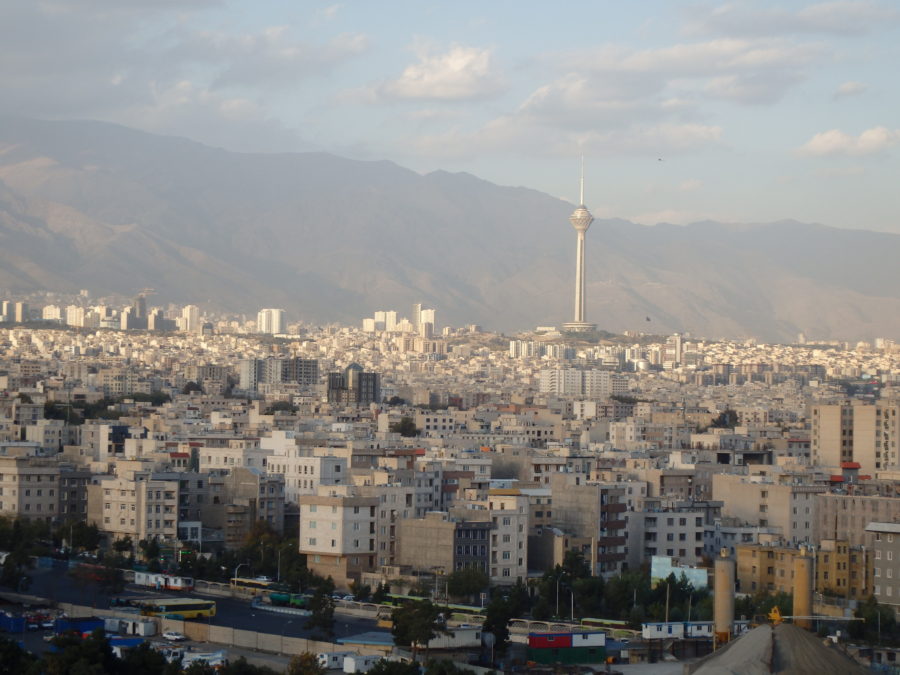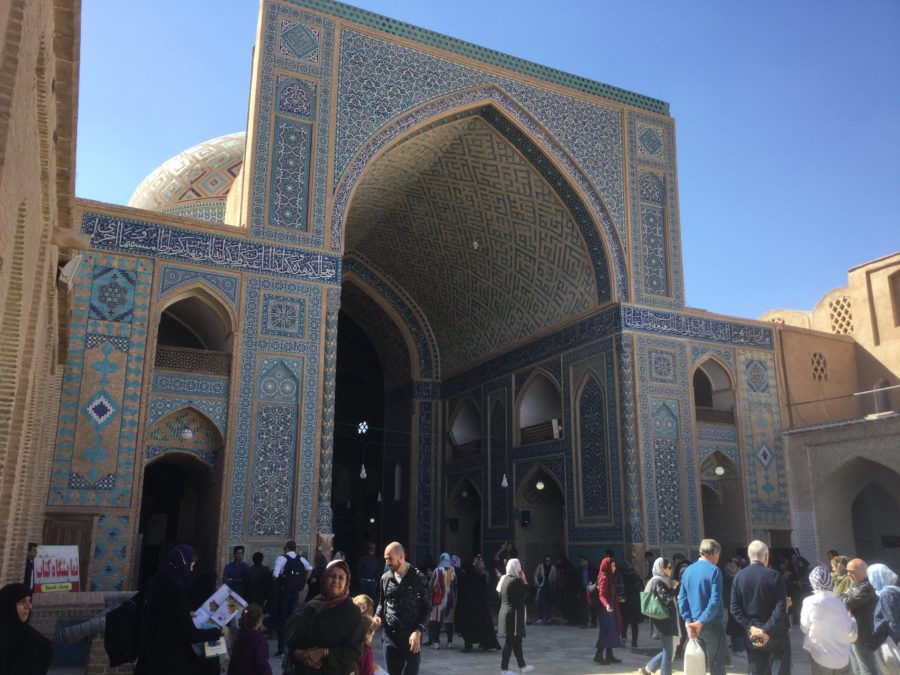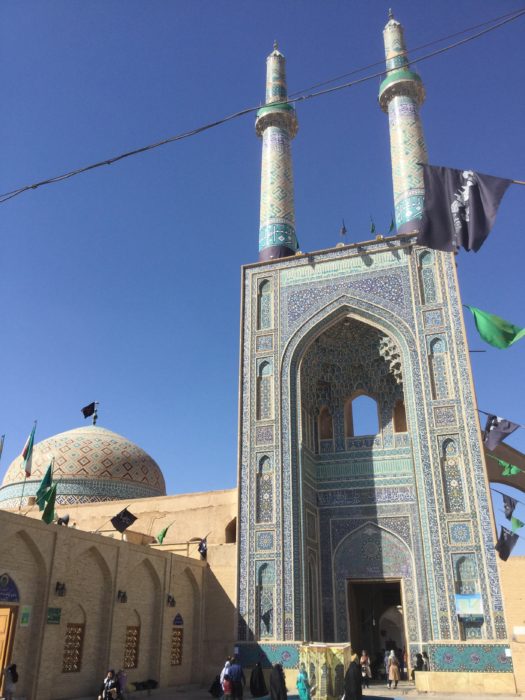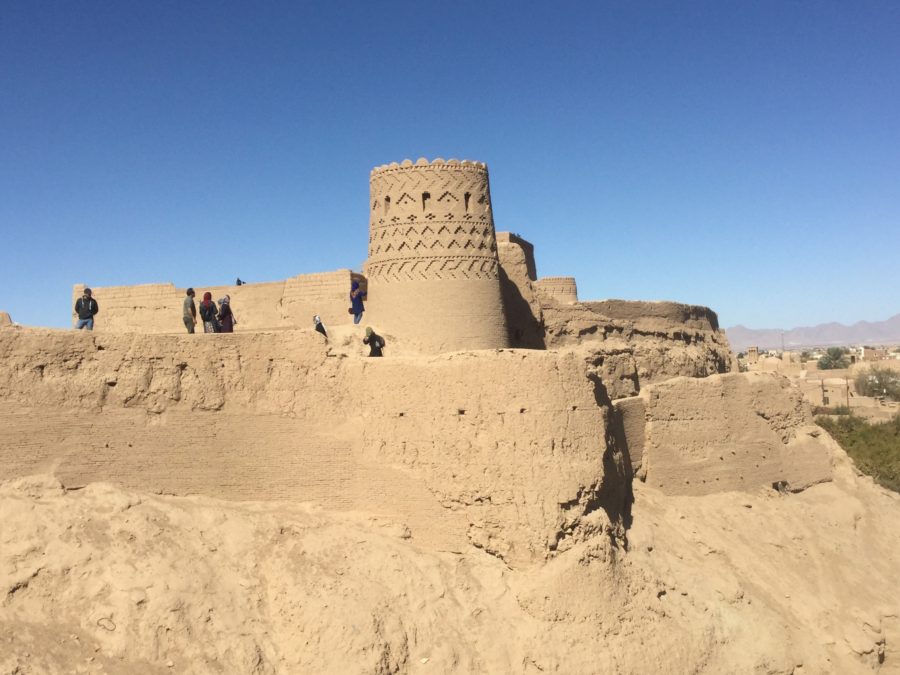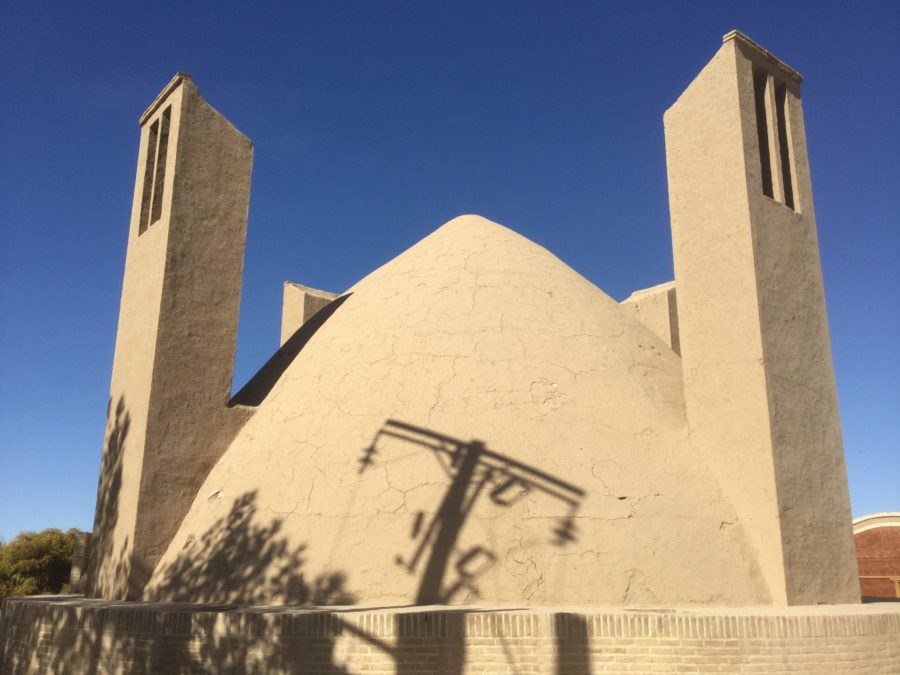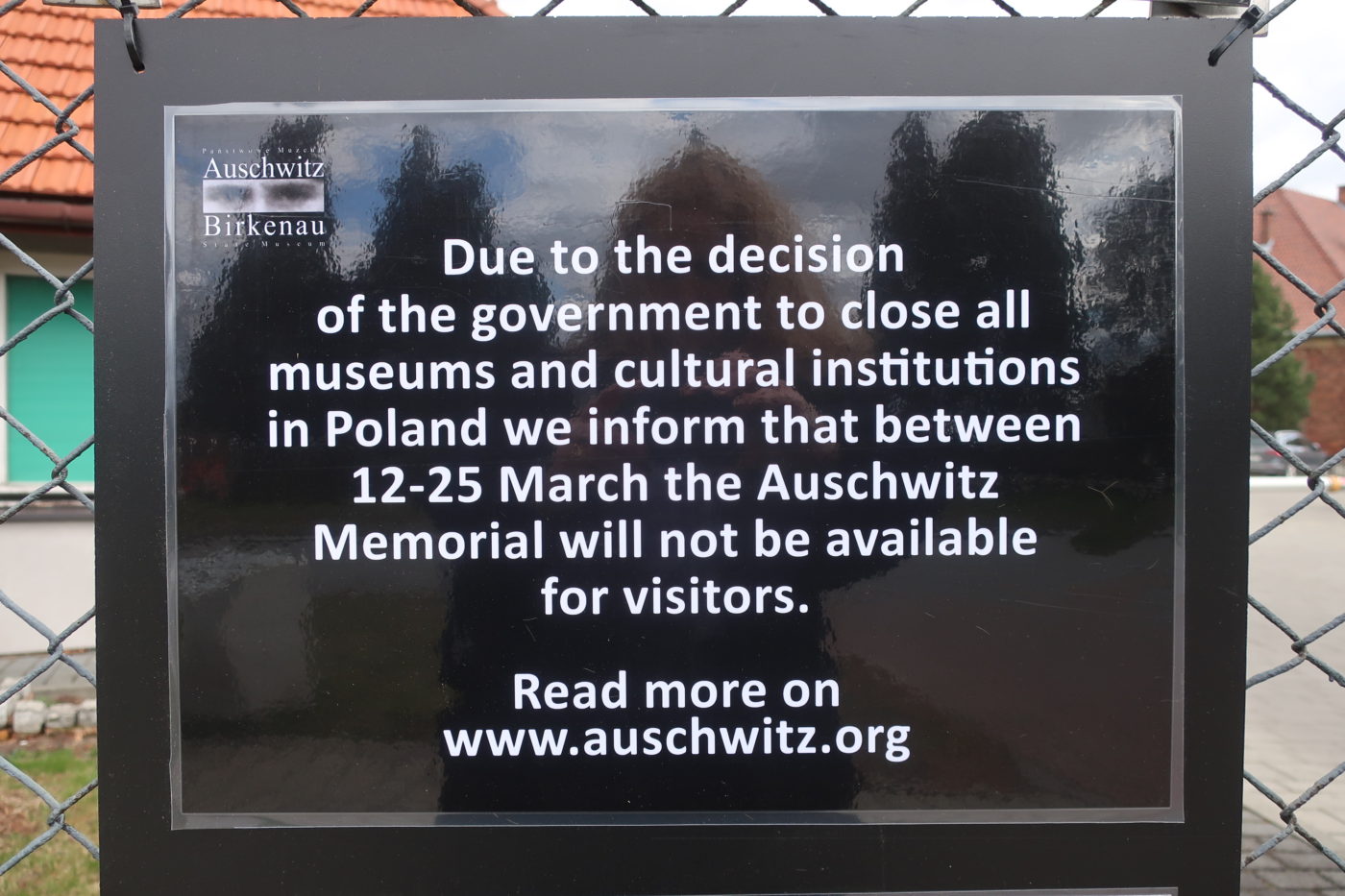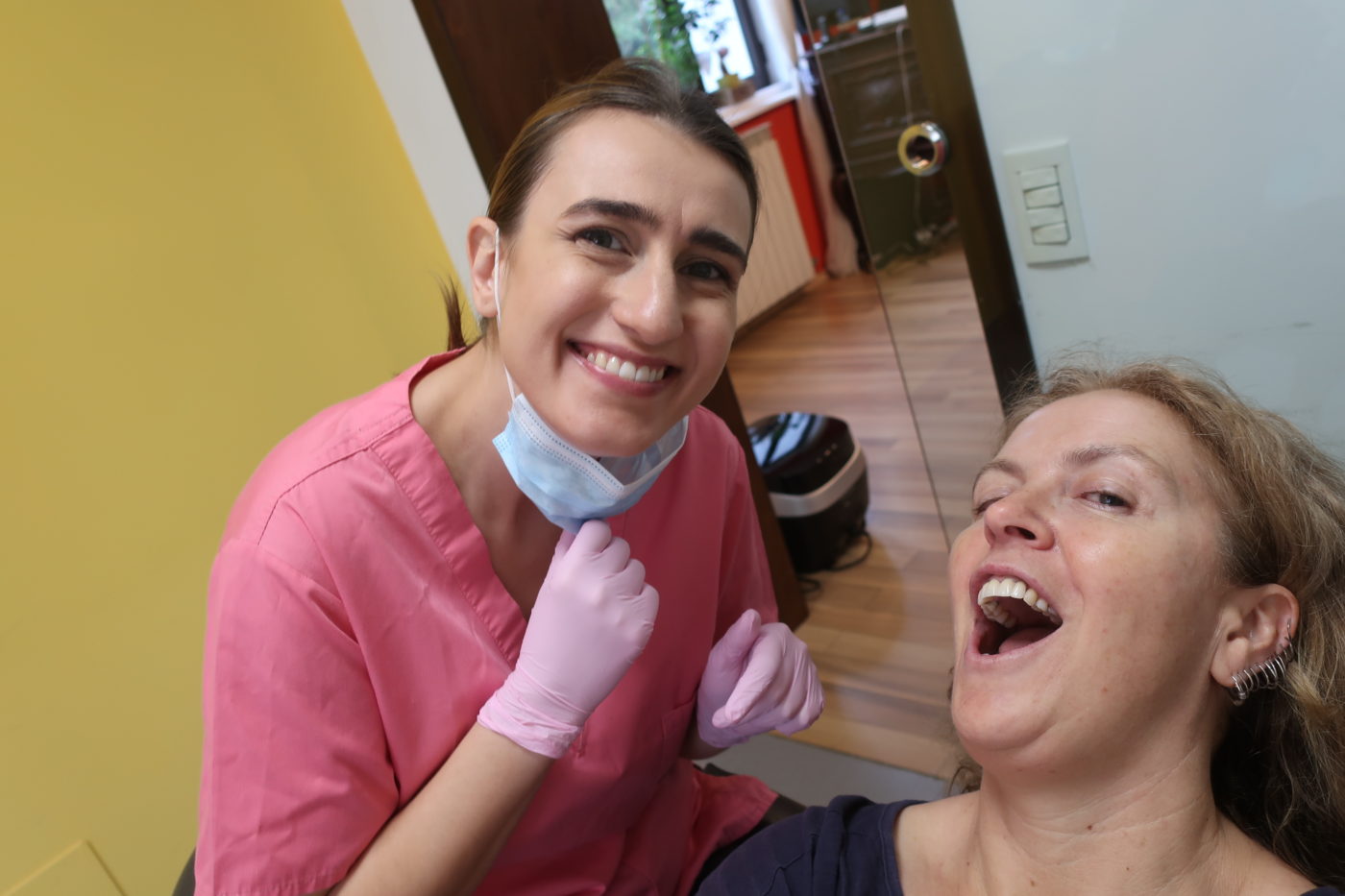We recently spent one month in Iran on our overland trip across the Eurasian continent, and were astounded with the beauty of this country and the hospitality of its people. This post shows the highlights of our time in Iran as an example itinerary for anyone planning to travel there.
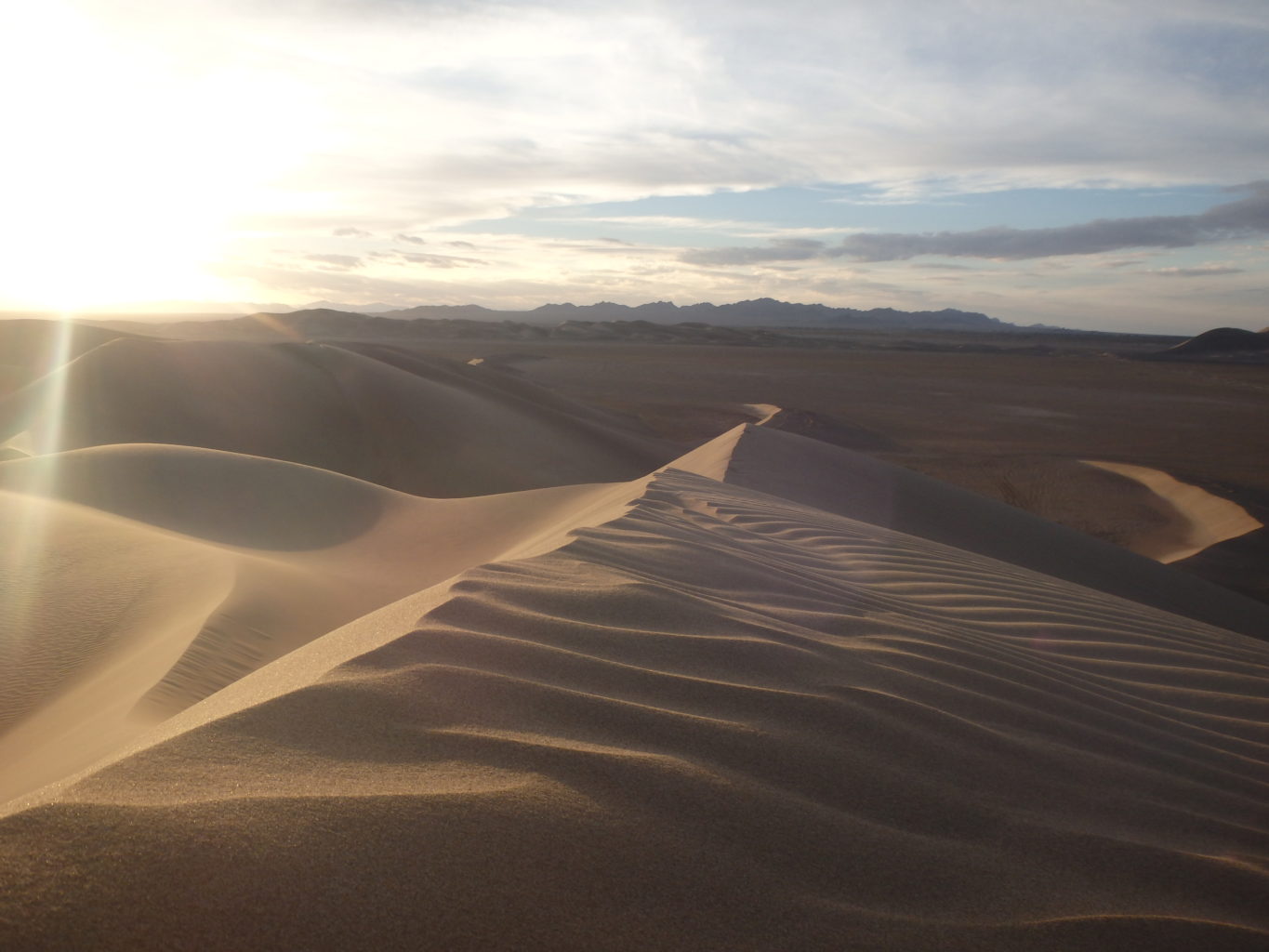
This post will focus on what we did, how we got around, where we recommend to go and what to see. We travelled comfortably through Iran on $16 AU each per day. For all of the practical information on how to travel Iran on a budget go to our post –
Frugal Travel Guide to Iran
One month in Iran
Iran is vast… vast and ancient. After looking over a map and into its rich history we were quite overwhelmed! You could spend months delving into its many diverse regions. As we only had one month in Iran, we chose the best places to visit comfortably at the speed we travel. Some people could maybe cram this into a busy two weeks but we prefer to move slowly.
One thing’s for sure, the country is that awesome that we will have to return sometime in the future to see the many other special places it has to offer.
What is there to see?
What can we say – Iran has it all! Cities dating back thousands of years, full of beautiful mosques and bustling bazaars. Historic sites and ancient temples. Scorching deserts and towering mountains. There is something here for everyone!
Our Journey
- Days 1 to 4 – Mashhad
- Night train to Tehran
- Days 5 to 9 – Tehran
- Night train to Shiraz
- Days 9 to 12 – Shiraz
- Bus to Yazd
- Days 13 to 17 – Yazd including day trip to Kharnak, Chak Chak and Meybod
- Bus and taxi to Varseneh
- Days 18 to 20 Varseneh including day trip to the sand dunes in the Dasht-E-Lut desert
- Hitchhiking and taxi to Esfahan
- Days 21 to 25 – Esfahan
- Bus to Tehran
- Days 25 to 29 – Tehran
We began in Masshad in the far North East of Iran as we had crossed the border from Turkmenistan at Sarakhs. Our journey ended in Tehran with a flight to Singapore . We ended up spending a long time in Tehran because we really enjoyed the city, and were travel weary after 10 solid months on the road…. Also, we had found the best hostel in all of Iran and struggled to tear ourselves away!!
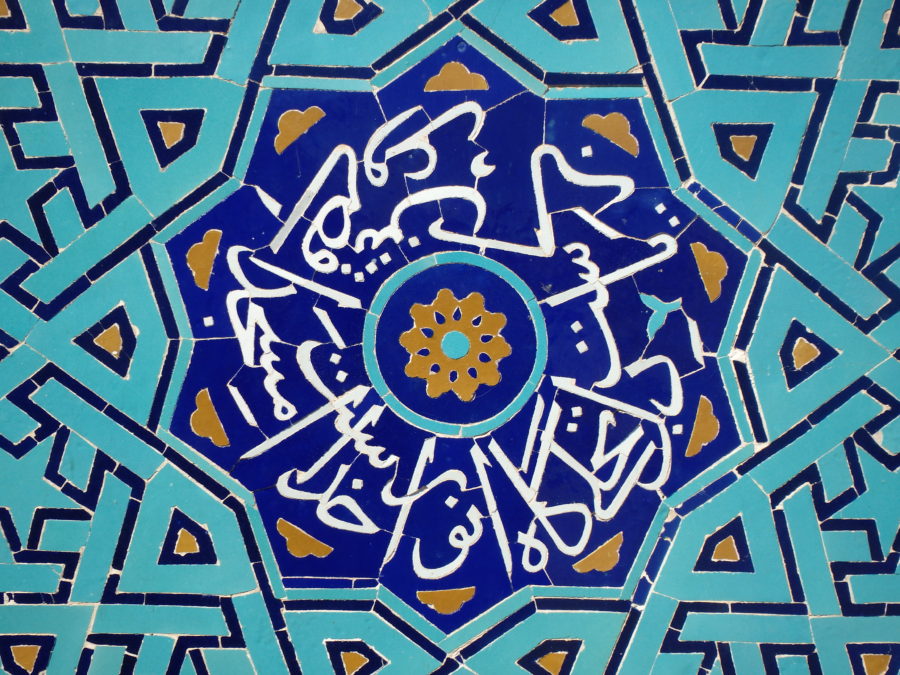
Read how we got our Iran visa in Bishkek, Kyrgyzstan

The Highlights on YouTube
Our adventure in Iran and what we recommend – city by city
Mashhad
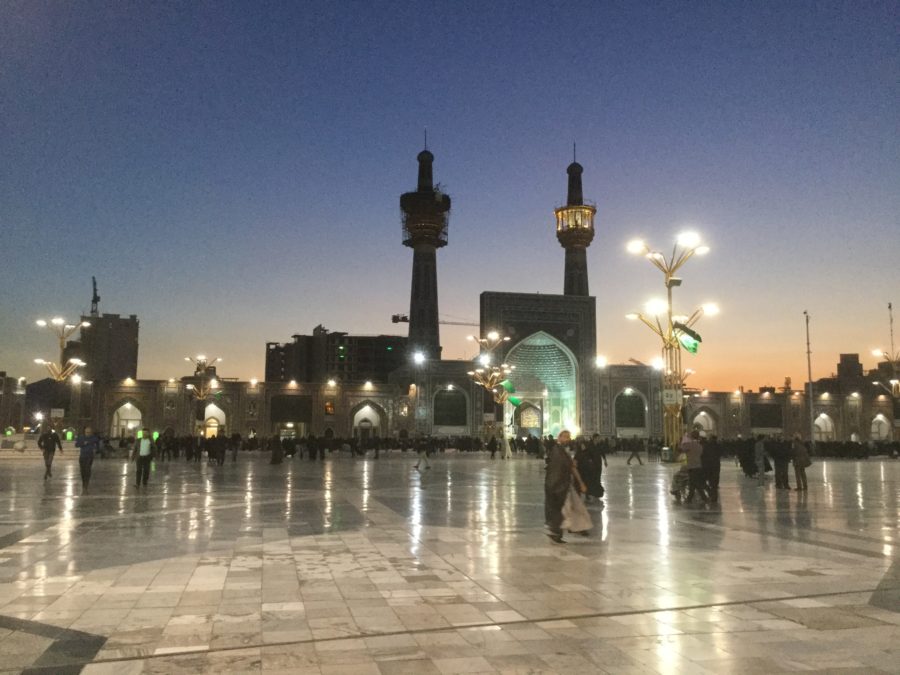
Mashhad is the 2nd largest city in Iran, the holiest city in Iran and home to the holiest site in the Shi-ite world.
The Imam Reza shrine
The main reason most people visit Mashhad is for the Imam Reza Shrine complex where the 8th Imam’s mausoleum lies. It receives over 12 million pilgrims a year and is said to be the biggest mosque on earth by area. It is colossal and should not be missed. In my opinion it is the most evocative and awe-inspiring site in Iran.
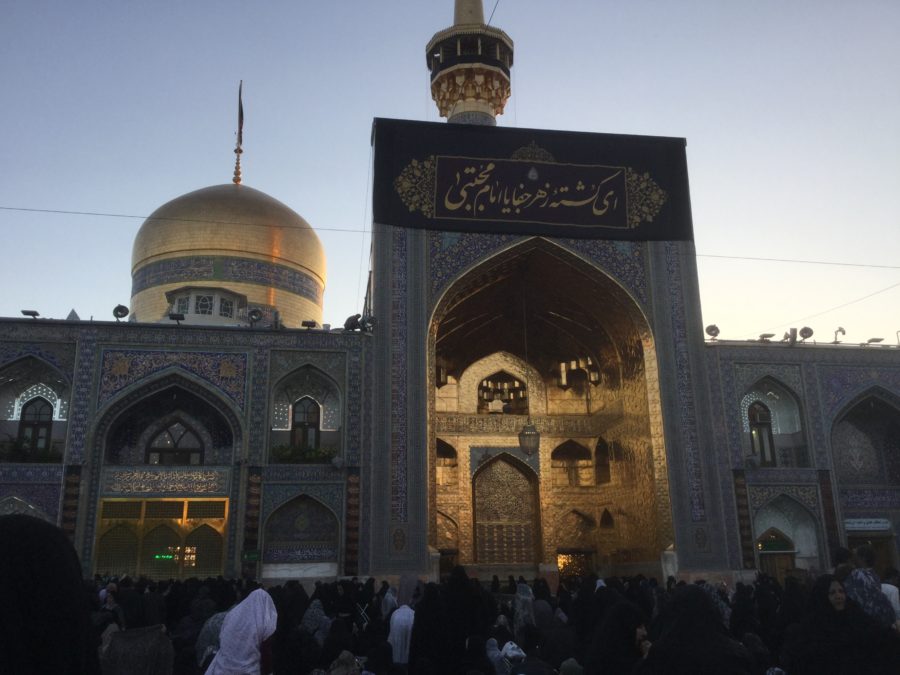
Of the 3 full days we spent in Mashhad we kept returning to the haram, which is the complex where the shrine is situated. It is immense and contains shrines, courtyards, mosques and prayer rooms on many levels.
There are also 2 museums within the complex that are worth seeing: the carpet museum and one for the shrine itself which includes wooden doors and decorations dating back to the 13th century.
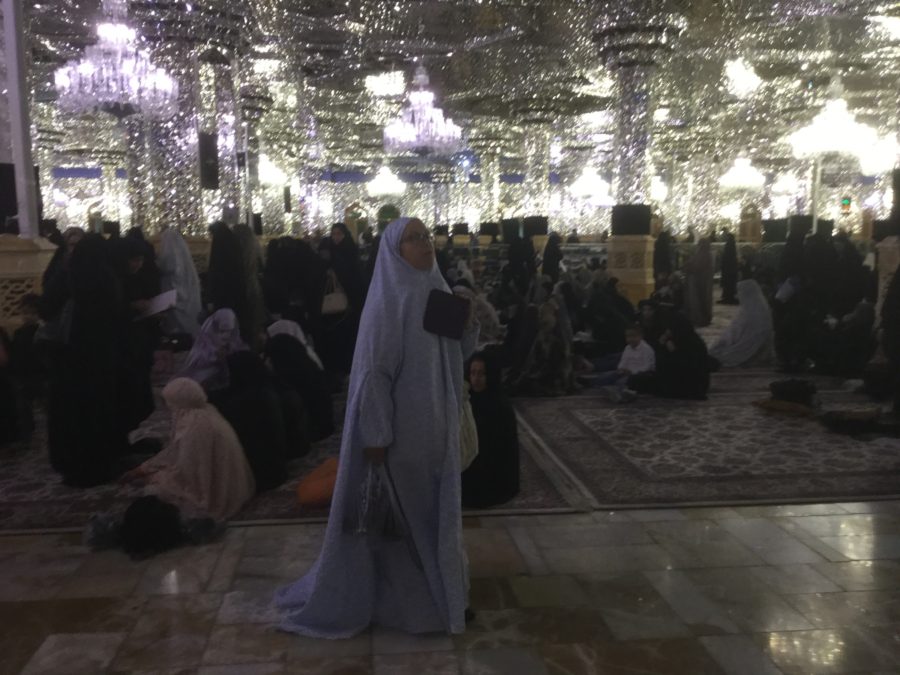
It is worth returning here at different times of the day to watch the faithful come to pray and pay their respects. The crowds flock in and out at the main prayer times. Sunset and nighttime are particularly beautiful as the colours and atmosphere change with the light.
To enter the haram is free, and the museums cost 10,000 Rials each. In November 2018 134,000 IR = $1 US.
Dress conservatively, Woman will be given a white chador to wear at the entrance. You are frisked on the way in, with big cameras and power banks to be left at a building near the main entrance, but you can take a phone in. One prayer time we were told we had to enter with a free guide who restricted us a little, other times we were able to enter unhindered. It seems quite random.
Tip – Mandy borrowed a black chador from our guest house so she blended in more with the locals. This meant we went into some courtyards and prayer rooms which we found out later should have been out of bounds… but our guide had taken us to them anyway! As this is a holy place, please be respectful.
Other things to do in Mashhad
People-watching! Wander the main thoroughfares streets, Imam Reza and Imam Khomeini streets to watch the holiday-making pilgrims at play. It’s very entertaining to see the different dress sense – to guess which nations the visitors are from, and to watch them browse the souvenir shops.
Try the delicious yogurt drinks in the juice bars and the incredible freshly squeezed fruit juices on the streets. Pomegranate juice is ubiquitous and is a taste explosion!
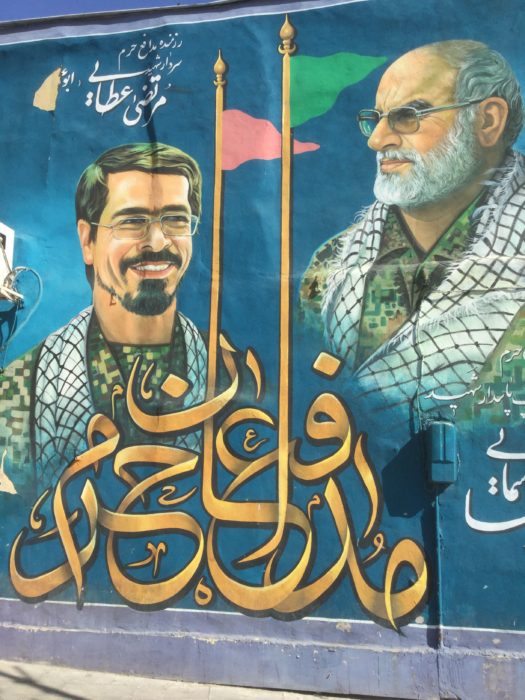
m Khomeini street
Our train journey from Mashhad to Tehran on YouTube
Tehran
From Mashhad we took a night train to Tehran. Trains are a cheap, comfortable and excellent way to get around Iran.
See our Frugal travel guide to Iran for more information on train travel in Iran.
Tehran is a bustling metropolis. A big, hectic city that assaults the senses. The traffic can be intimidating at times and crossing the road is a challenge in itself. It’s a great city to linger in though once you get over the initial shock. The metro system is excellent and a great way to get around. We spent much longer here than we’d planned because there is so much to see and do, and we barely scratched the surface. These were our highlights. –
The Grand Bazaar
We visited the grand bazaar on numerous occasions. It is a labyrinth of alleyways covering over 10 kms and has every kind of merchandise that you can imagine. Different products are found in different zones and you can easily get lost wandering around, but the friendly bazaaris (shopkeepers) are always willing to help if you ask them. It’s a great place for clothes shopping or to pick up last minute gifts and souvenirs.
Tip – Use the MAPS.ME app to help find your way around the alleyways. We escaped from the maze numerous times with its aid.
The US Den of Espionage
The former US embassy was the scene of the famous hostage crisis during the Iranian revolution in 1979, when over 60 Americans were held for 444 days.
I remember watching footage of this on TV as a kid, and it all came flooding back as we walked through the embassy rooms with the obligatory guide. Mohammed explained how the drama unfolded and provided many interesting facts. With its anti-American propaganda murals on the walls, this museum is a fascinating place to visit.

The Azadi Tower
Out in the west of Tehran is the Azadi tower. Built in 1971, it is an iconic landmark of the city and has been the scene of many demonstrations over the years. On a clear day it is worth going to the top of the tower for impressive 360° views of the city and the surrounding mountains.

The Azadi tower 
Views from the Azadi tower
The Islamic Revolution and Holy Defense Museum
The Holy Defense Museum details the advent of the Islamic revolution and the horrors of the Iran-Iraq war of the 80s that claimed over a million lives. The multi-media display is modern and very impressive and the story shocking. Outside is a huge array of military hardware, bombs and rockets.


The Tab’iat Bridge
A short walk from the Defense museum, through the ????? park, is the Tabi’at bridge. It is a wide, modern public space that links two forested parks across a busy motorway, and affords great views of the city.
Locals flock here to picnic, walk, exercise and just hang out. Another great place to people-watch and have some lunch at one of the many restaurants under the bridge.

The National Jewelry Museum
If bling is your thing, this place is dazzling. An incredible display of the Iranian crown jewels in the basement of the national bank. It has the world’s largest pink diamond and a 200 year old stone encrusted dome. Unfortunately cameras are strictly forbidden and must be left in a locker before entering the vault.
Tip – The museum is only open from 2-4 pm, from Saturday until Tuesday. Make sure to get there early.
North Tehran
If the hustle bustle of Tehran gets too much for you, you should head to the pleasant, affluent area of north Tehran up in the hills. The village of Darband is found here in the foothills of the mountains. You can enjoy the scenery and the relaxed pace of life, go hiking or take a cable car up into the ski areas.
We intended to go there and took a metro as far as Tarjish station at the end of the line. It started raining heavily so we ducked into the interesting undercover bazaar there. In a sweet shop (there are many of them in Iran) we met a friendly Iranian lady who invited us back to her lavish apartment in the nearby wealthy suburb of Zafronia. We spent the rest of the day chatting, eating and enjoying her wonderful company and hospitality. This is a common occurrence in Iran and should be embraced at every opportunity.
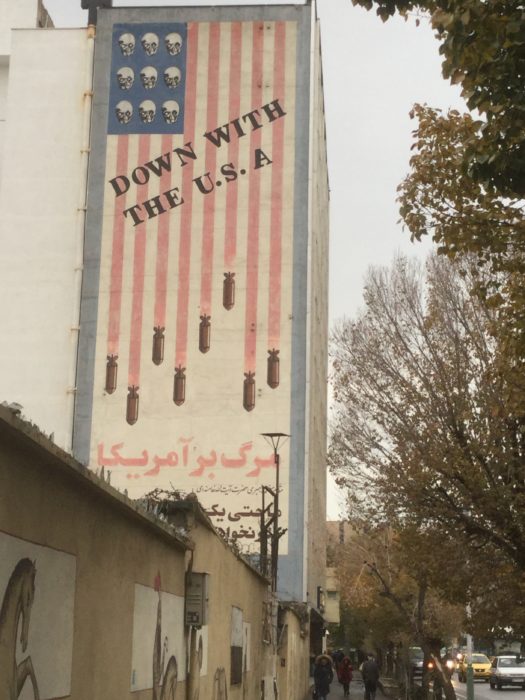
Shiraz
From Tehran we took a night train south to Shiraz across the beautiful Zagros mountains. It left at 18.40 and got us into Shiraz early the following morning after a comfortable night’s sleep.
Read about how to travel Iran in our Frugal Travel guide to Iran.
We were drawn to the city of Shiraz purely because it was our favourite wine in Australia. It’s a shame the vineyards were pulled up when Islamic law was imposed after the revolution and alcohol was made illegal. Shiraz is a great historic city to explore though and makes a base for visiting the nearby world famous ancient ruins at Persepolis.
These were the highlights of our 3 day stay in Shiraz.
Vakil bazaar
The Regent’s bazaar. Another buzzing Iranian bazaar with a great atmosphere. Here you can get everything from carpets to crafts, clothes to spices. We enjoyed getting lost in its winding alleys.

The Pink Mosque
The Pink Mosque, or Nasir al-Mulk, is a must-see in Shiraz. Its beautiful stained glass windows throw a kaleidoscope of coloured light over the intricately adorned tile-work when the morning sun shines, turning the interior of the mosque into a wonderland. We had seen this iconic image of Iran so many times on Instagram that we dubbed it the “Instagram Mosque.”


Tip – Get there early to beat the crowds and to catch the best light when the sun is low in the sky. As it rises its rays recede across the room. It opens at 7.30 am. We arrived at 7.50 am, and there was already a crowd of people. Entrance fee – 200,000 Rial
Qavam house – The Naranjestad
Qavam house is a traditional historic house built in the 1870s by a wealthy merchant family. It has intricate mirrored tile-work and the gardens are lined with orange trees, date palms and fountains. It is an oasis of calm in a busy, frenetic city. Entrance fee – 200,000 Rial.
In Shiraz we used Couchsurfing so we could stay with and meet Iranian people. It’s a great way to experience the real Iran and get an insight into local life. We met up with a really nice student called Fatimeh who was happy to show us around her city and we spent a wonderful day talking and exploring the city together.
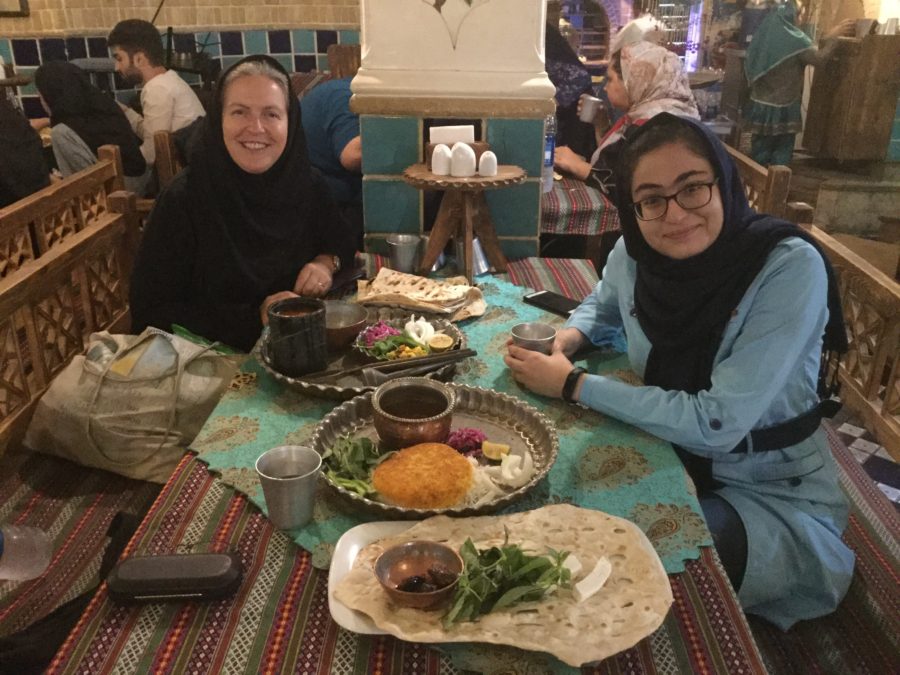
Hafez’s Tomb
Fatimeh took us to Hafez’s tomb set in an attractive park in the north of Shiraz. If you spend some time in Iran you will soon hear of Hafez the famous poet. He is so well known and respected that every Iranian can quote his poetry when asked. This is a popular place for Iranians to come at sunset to socialise and recite poetry together. Entrance fee – 200,000 Rial.

Shah-e-Cheragh Shrine
This is a beautiful mosque/mausoleum complex dedicated to Imam Reza’s brother which attracts thousands of pilgrims. Non-Muslims will be guided round for free and cannot enter the inner sanctums of the mausoleum.
Persepolis
The number one UNESCO ancient site in Iran dates back to the 5th century BC from the Achaemenid empire and stands proud in the desert an hour’s drive out of Shiraz. Although destroyed by Alexander the Great’s invading army a lot of remnants still stand.
Although this is a must-see site… we didn’t see it. Unfortunately the day we ventured out there by taxi we were turned away 5 kilometers from the entrance by the police.
It was an important religious holiday, the build up to anniversary of the martyrdom of Hussein, a huge deal in the Shi-ite world. The religious police close non-Islamic sites on these days so it is always worth checking in advance. This is a good excuse for us to return another time! The taxi driver invited us to his house for lunch instead!!
Read our blog – Travel costs and Information for Iraqi Kurdistan
Yazd
It was a 6 hour VIP bus journey across the barren, rocky desert from Shiraz to Yazd. The VIP buses are quite comfortable with reclining chairs and food provided.
Read about how to travel cheaply around Iran in our Frugal travel guide to Iran

Yazd was exactly what I expected from an ancient Iranian desert city. The centre is a world UNESCO heritage site deservedly so with its crumbling adobe buildings, narrow alleyways and stout wind catcher air chimneys dotting the landscape. It has real character and is definitely worth a few days or more to absorb the atmosphere. It’s thrilling to just wander the alleyways of the old city and get lost in the 1000 year old streets. These were our other highlights –
The Jameh (Friday) Mosque
The 12th century Friday mosque rises like a beacon in the centre of the old city with its 2 huge minarets. The interior is as impressive as the entrance.

Jameh Mosque yazd 
Jameh Mosque Yazd
Water Museum
Located in a restored mansion, the water museum showcases the incredible ‘qanat’ aqueduct system that has evolved in this desert region allowing Yazd to be one of the oldest inhabited cities on earth. It is an ode to the brave workers who suffer harsh conditions to keep the water, the lifeblood of the city, flowing for centuries.
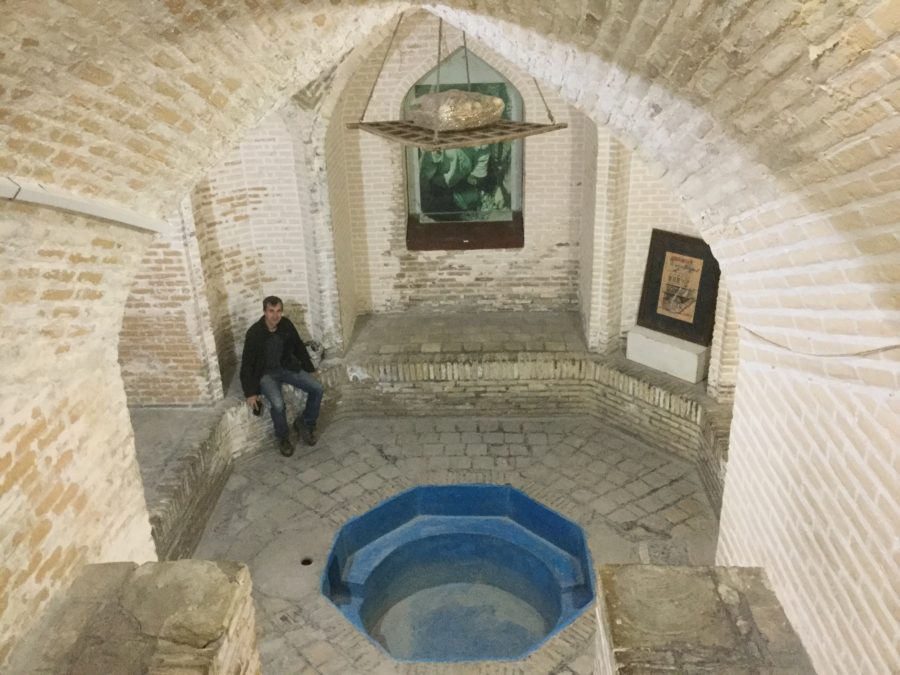
Zoroastrian Fire Temple
The pre-Islamic Zoroastrian religion has thrived in this region for thousands of years, long before any of the ‘modern’ monotheistic religions came along. Zoroastrians worship and protect the 4 elements. As there has been a fire continuously burning in this temple since 470 AD, It has become a focal point for Zoroastrian pilgrims.
The taxi driver that drove us here flatly refused payment, insisting we were his guests and it was an honour for him. We tried to give him the money 3 times, in the method of taarof but he would not take it, insisting he would be offended if we offered again. We experienced his aspect of Persian culture on numerous occasions and each time we would come away feeling both humbled and honoured.
The Towers of Silence
On the outskirts of Yazd, where the desert meets the city, are the towers of silence. These are the burial sites of the Zoroastrians. Believing burying the human body would pollute the earth and contaminate the body, the Zoroastrians instead would leave the corpse on top of these towers for a sky burial. The vultures consume the body, leaving it pure.
It is an eerie place and definitely worth a trip out here by taxi.
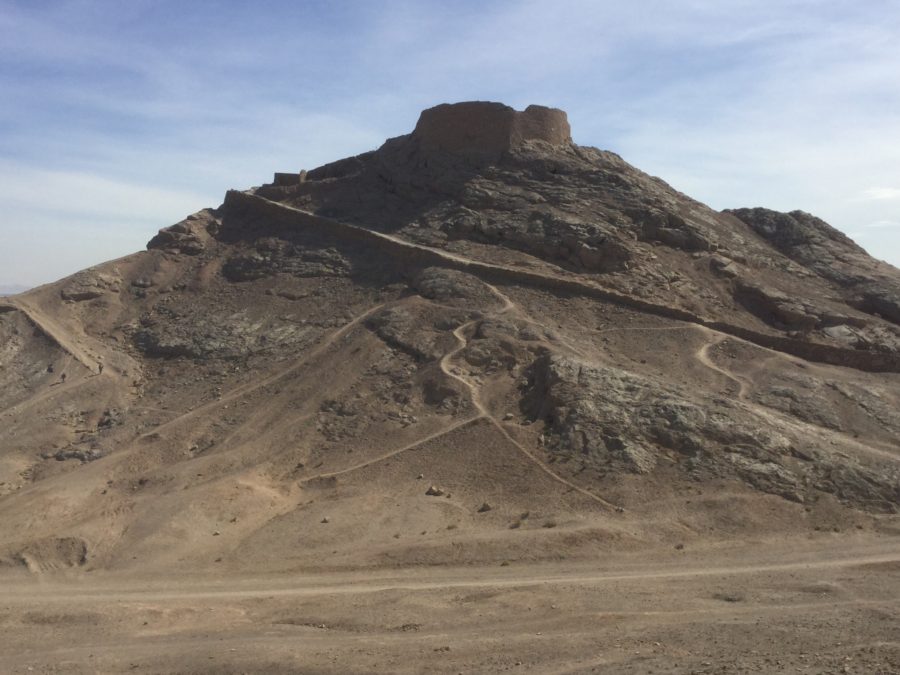
The Amir Chakhmaq Complex
The Amir Chakhmaq complex is just outside the old city centre in Yazd and is a huge mosque and old caravanserai set in a square surrounding a beautiful fountain. An excellent place to come at night when the fountain is lit up and people gather to enjoy the cool evening air.
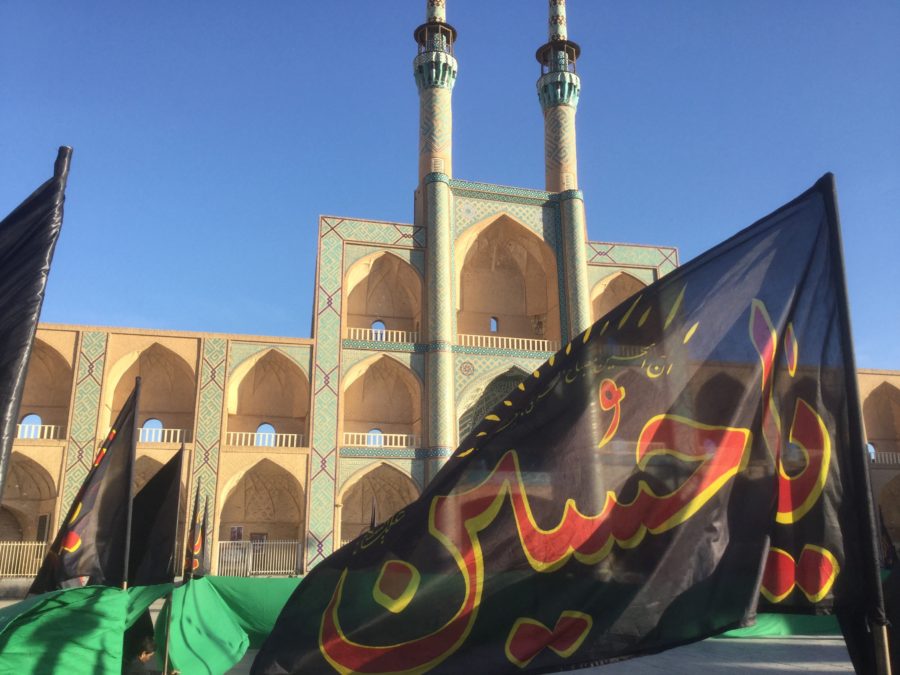
Sit on a rooftop and admire the view
One of the most wonderful things to do in Yazd is to sit on one of the many rooftops in the old town and watch the sunset over the ancient city. The desert sunsets are always spectacular and with the call to prayer echoing from the Mosque minarets it sets the scene of being in a wondrous, timeless place. Most hotels, guesthouses and restaurants will have a rooftop space.
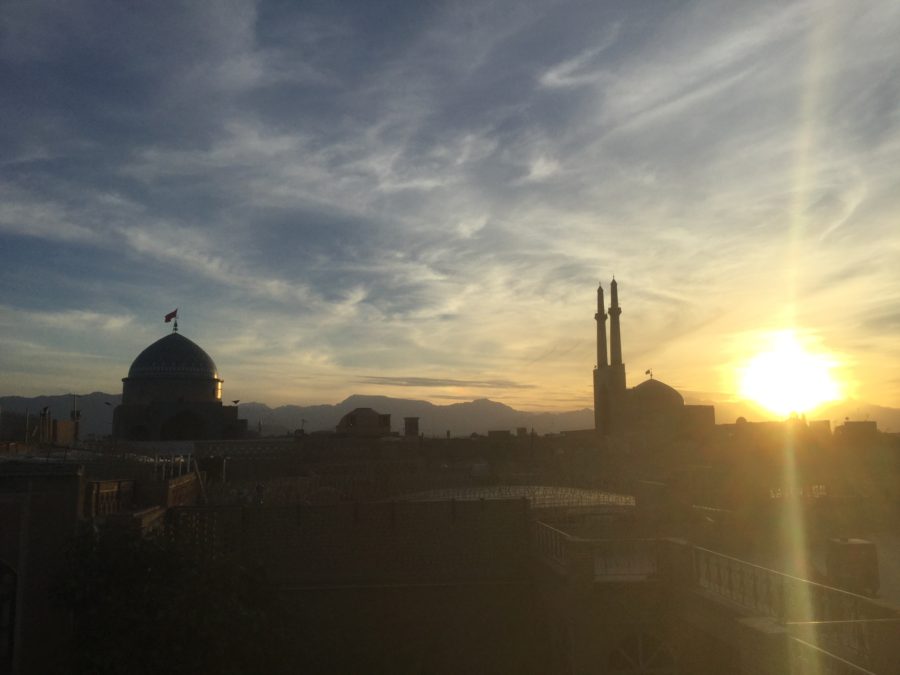
Day trip into the desert
It’s worth taking a day trip out into the desert surrounding Yazd to visit the fascinating old villages and sites and to see the harsh landscapes and witness desert life. A popular trip ran by most guesthouses go to Kharnaq, Chak Chak and Meybod.

Kharnaq village 
Meybod castle 
Meybod ice house
Kharnaq is a scenic abandoned village of mud brick houses dating back over 1000 years. Walking though here is a real Indiana Jones moment! Chak Chak is a holy Zoroastrian shrine set on a cliff overlooking the desert in a spectacular location. Meybod is a small desert town with a mud brick castle, ice house, pigeon tower and caravanserai.
Tip – This tour is ran by every guesthouse and agency in town. It cost us 700,000 Rial each ($6 US) for 4 people sharing a car. Entrance into most sites cost an extra 200,000 Rial each. The tours typically take about 6 hours returning to Yazd at 2.30pm. This is really fast and you get little time to enjoy each site. We’d recommend negotiating to pay more to stay out there longer and enjoy the amazing location.
Varzaneh
To get to the small Central Iranian desert town of Varzaneh from Yazd, first we had to take a bus to the outskirts of Na’in. Then we negotiated a taxi (500,000 Rial) to drive us the remaining 70 km to Varzaneh.
For information on how to travel around Iran cheaply see our Frugal travel guide to Iran post.
Varzanah is a small Central Iranian desert town with a pleasant atmosphere and very friendly people. The main reason to come here is for easy access to the nearby desert sand dunes and salt flats.
Varzaneh desert trip
A few places in Varzaneh organise trips out into the surrounding desert which is quite easily accessible and usually done on a morning or sunset tour to avoid the heat of the mid-day desert sun.

We went with Mohamed from the Negaar guesthouse, which we’d definitely recommend. The trip takes you out to walk on the incredible slat flats that was once a sea bed 12,000 years ago and the highlight is climbing the 60 metre sand dunes for a spectacular sunset across the vast sandy desert.

Esfahan
There were no buses running from Varzaneh to Esfahan as the martyrdom of Hussein day was upon us. So we decided to hitchhike to Esfahan. Within 10 minutes of waiting we were picked up by a friendly local and his son who willingly drove 50 km’s out of their way to the main highway leading to Esfahan. They bought us tea and refused payment but we did manage to give them a bag of dried fruits we had bought for our lunch!
Esfahan was our favourite Iranian city. The ex-capital of Persia during the safavid era in the 16th and 17th centuries. It is steeped in history yet modern and bustling. The architecture is sublime and the food options are wonderful and plentiful. The highlights for us were –
Nasque-e-Jahan square
Undoubtedly the jewel in the crown of Esfahan. The huge centre piece of the city is surrounded by it’s two most important mosques, the Shah Mosque, the Sheikh Lotfallah Mosque and the Ali Qapu Palace which were all built by Shah Abbas. To the north is the enormous grand bazaar.
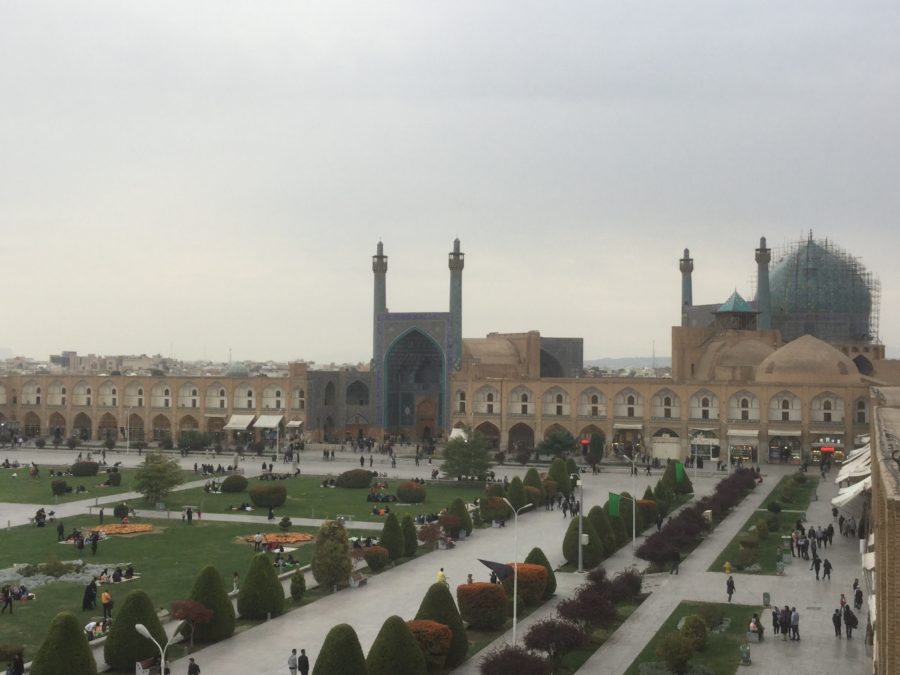
All of these places are worth spending time in. You could spend 2 or 3 days just in this area, admiring the architecture and soaking up the ambiance of Iranian life here. It comes alive from early in the morning until late at night.

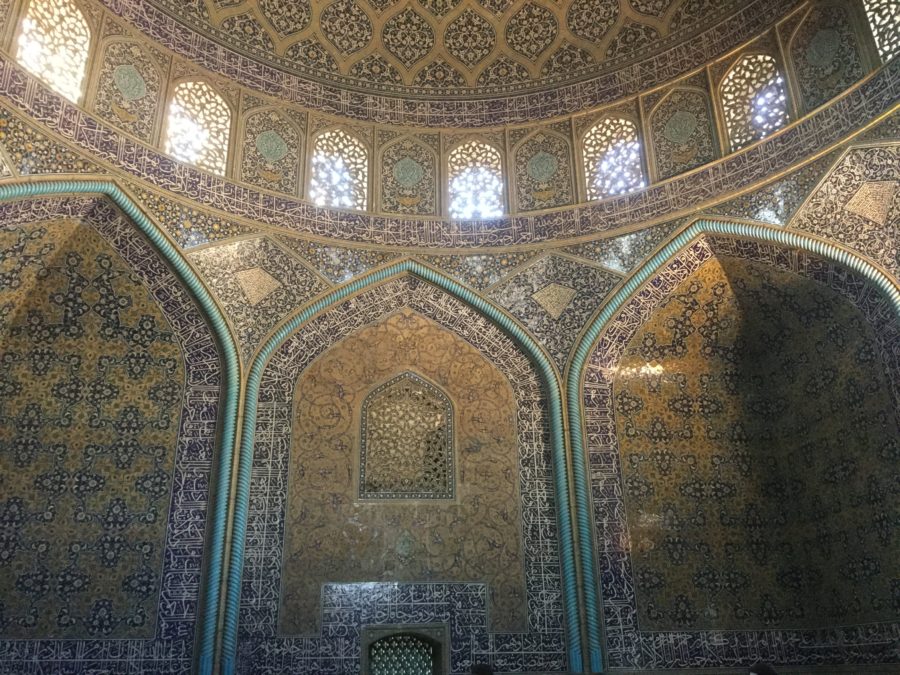
The Sheikh Lotfallah Mosque is a must see. The tile-work and calligraphy both inside and out is breathtaking.
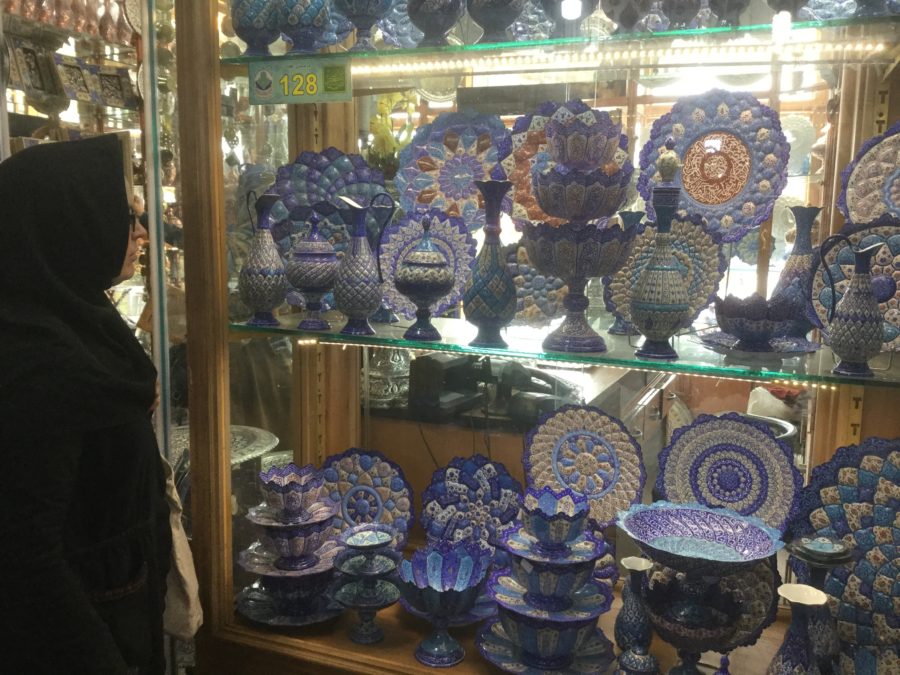
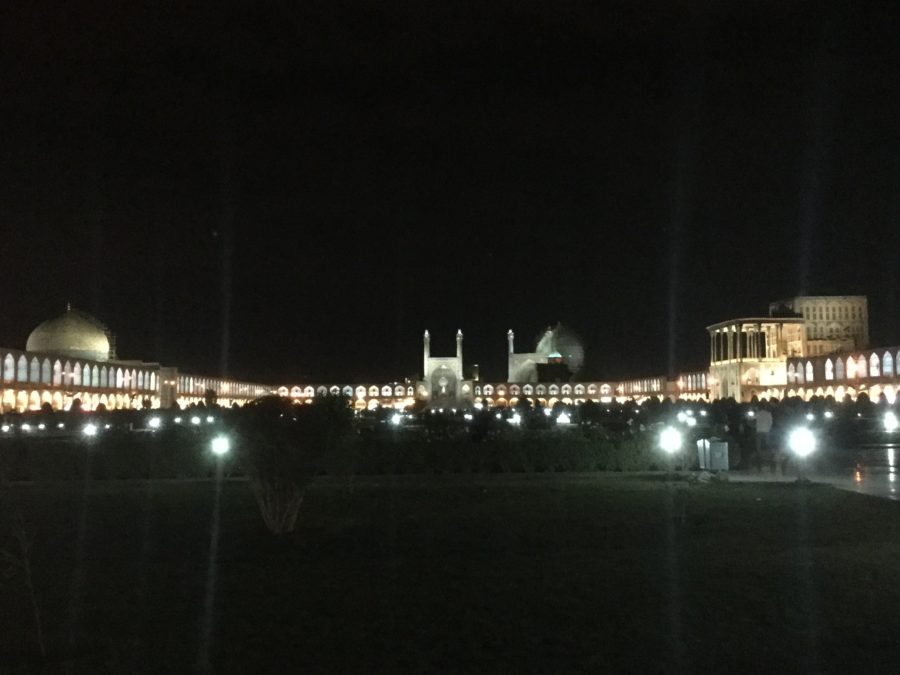
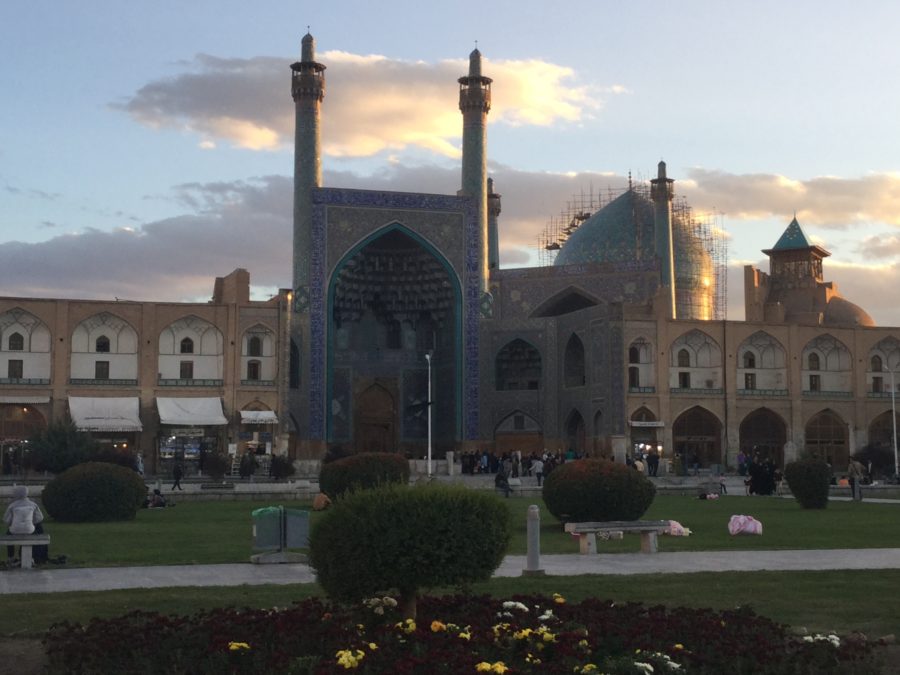
The Armenian Quarter
After days of marvelling at the delights of Naqsh-e-Jahan you might want to see something else. Head south over the Zayandeh river to the Armenian quarter where you’ll find the Vank cathedral. This elaborate cathedral was built over 400 years ago by the Armenian community that were bought here by Shah Abbas to help construct his empire.
The bridges
Back at the river are a group of bridges that were built in the time of Shah Abbas that are another focal point of the city. The bridges span the river, linking 2 parks on either side and are attractively designed with brick archways. Whether the river has water in or not, people gather under the arches at sunset to socialise and sing. The acoustics inside is extraordinary.

It was a 6 hour comfortable bus journey back to Tehran for us to end our one month in Iran there.
For all the practical information you need about travel in Iran, head over to our other post –
How to travel the world as a Frugal Traveller
Frugal Travel guide to Iran
Here you will find information about where we stayed, what we ate, how we travelled, how much things cost and how we travelled on $16 AU per day each for one month in Iran!
So much more to see
This was what we comfortably fitted into one month in Iran, travelling at a reasonably sedate pace. We could have squeezed more in, but we do not like to rush things. We prefer to return again in the future to sample more of Iran’s delights. These are some of the other highlights we would like to see –
- The ancient citadel of Bam
- Kerman and the Kaluts desert
- Kashan
- Qeshm Island in the Persian Gulf
- Tabriz
- The mountains of western Iran
Moving on? Read our Travel Guide to Erbil Iraqi Kurdistan
Leave a Comment
We’re sure there are many more interesting places in this fascinating country. If there are any that we have missed out on, please leave a comment in the box below and let us know your favourites. It might give us more ideas for the future!
